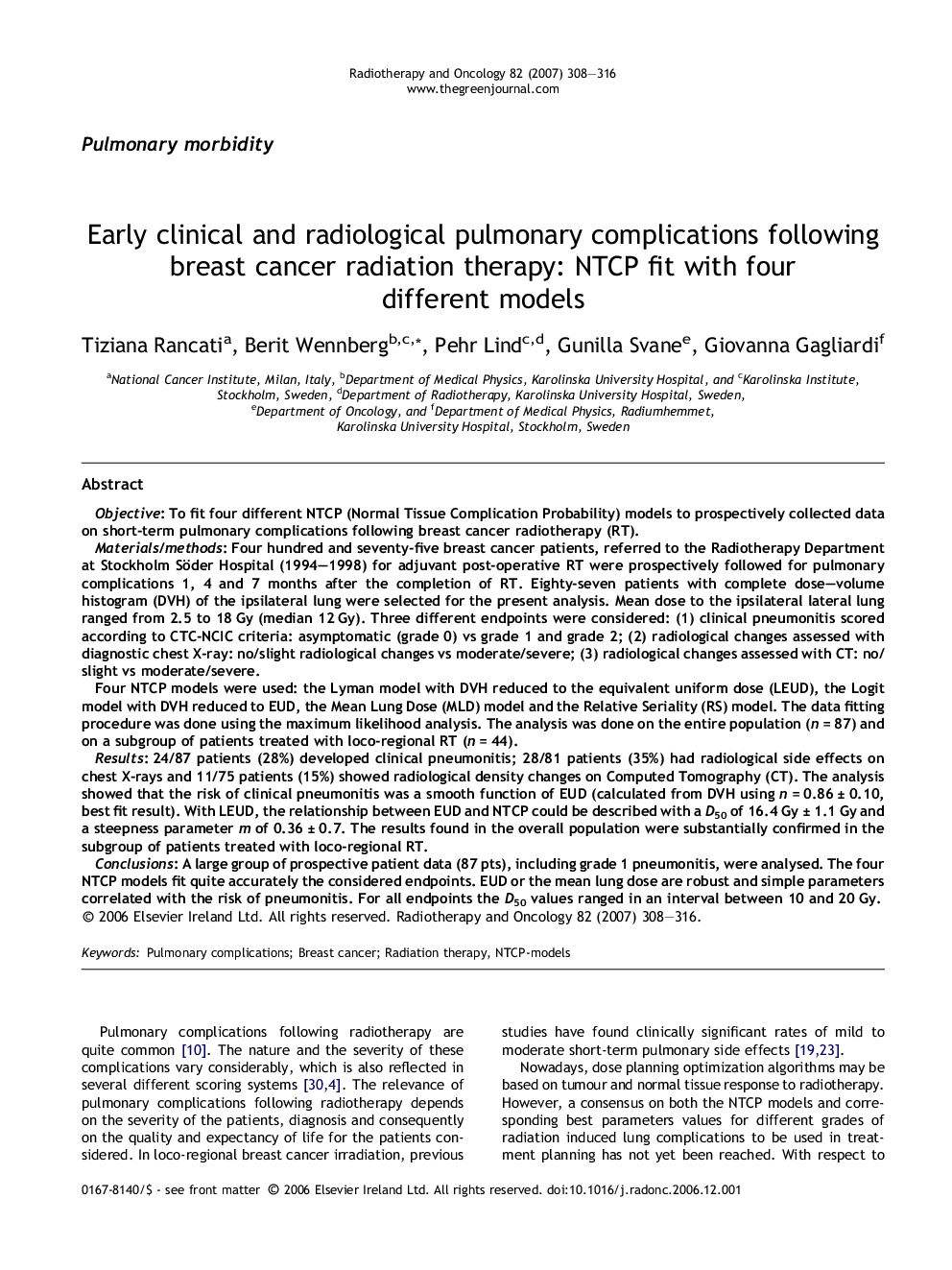| کد مقاله | کد نشریه | سال انتشار | مقاله انگلیسی | نسخه تمام متن |
|---|---|---|---|---|
| 2161085 | 1090903 | 2007 | 9 صفحه PDF | دانلود رایگان |

ObjectiveTo fit four different NTCP (Normal Tissue Complication Probability) models to prospectively collected data on short-term pulmonary complications following breast cancer radiotherapy (RT).Materials/methodsFour hundred and seventy-five breast cancer patients, referred to the Radiotherapy Department at Stockholm Söder Hospital (1994–1998) for adjuvant post-operative RT were prospectively followed for pulmonary complications 1, 4 and 7 months after the completion of RT. Eighty-seven patients with complete dose–volume histogram (DVH) of the ipsilateral lung were selected for the present analysis. Mean dose to the ipsilateral lateral lung ranged from 2.5 to 18 Gy (median 12 Gy). Three different endpoints were considered: (1) clinical pneumonitis scored according to CTC-NCIC criteria: asymptomatic (grade 0) vs grade 1 and grade 2; (2) radiological changes assessed with diagnostic chest X-ray: no/slight radiological changes vs moderate/severe; (3) radiological changes assessed with CT: no/slight vs moderate/severe.Four NTCP models were used: the Lyman model with DVH reduced to the equivalent uniform dose (LEUD), the Logit model with DVH reduced to EUD, the Mean Lung Dose (MLD) model and the Relative Seriality (RS) model. The data fitting procedure was done using the maximum likelihood analysis. The analysis was done on the entire population (n = 87) and on a subgroup of patients treated with loco-regional RT (n = 44).Results24/87 patients (28%) developed clinical pneumonitis; 28/81 patients (35%) had radiological side effects on chest X-rays and 11/75 patients (15%) showed radiological density changes on Computed Tomography (CT). The analysis showed that the risk of clinical pneumonitis was a smooth function of EUD (calculated from DVH using n = 0.86 ± 0.10, best fit result). With LEUD, the relationship between EUD and NTCP could be described with a D50 of 16.4 Gy ± 1.1 Gy and a steepness parameter m of 0.36 ± 0.7. The results found in the overall population were substantially confirmed in the subgroup of patients treated with loco-regional RT.ConclusionsA large group of prospective patient data (87 pts), including grade 1 pneumonitis, were analysed. The four NTCP models fit quite accurately the considered endpoints. EUD or the mean lung dose are robust and simple parameters correlated with the risk of pneumonitis. For all endpoints the D50 values ranged in an interval between 10 and 20 Gy.
Journal: Radiotherapy and Oncology - Volume 82, Issue 3, March 2007, Pages 308–316